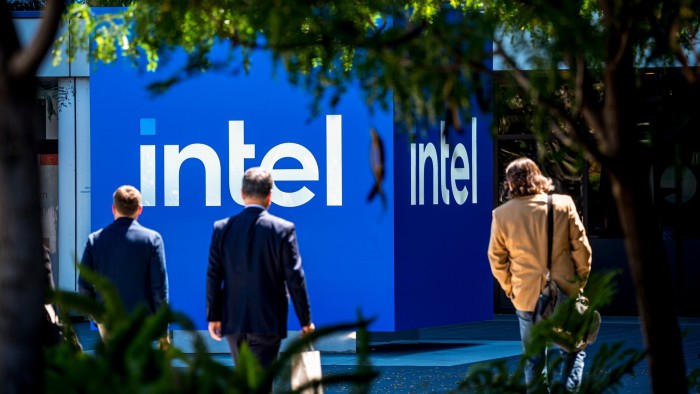Unlock the Editor’s Digest for free
Roula Khalaf, Editor of the FT, selects her favourite stories in this weekly newsletter.
Yard sales signs spring up when households need to tighten belts and bolster savings. What was bright and shiny a decade ago may have lost its lustre. But for collectors with a discerning eye, there may be some fine opportunities to be found under the dust and cobwebs.
That is the situation in the M&A market today. The few deals out there are increasingly corporate divestitures from troubled parent companies being snapped up — often by private equity — at far below peak valuations.
For example, Silver Lake scooped up Intel’s Altera unit at a valuation of $8.75bn, compared with the nearly $17bn the semiconductor group paid exactly a decade ago. Last week Capri Holdings pawned off Versace to Prada for $1.4bn, a discount to the $2.1bn it bought the company for in 2018. And troubled golf-club maker Topgolf Callaway just sold an apparel line, Jack Wolfskin, to a Chinese buyer for $290mn after paying nearly $500mn in 2018.
Financing markets are largely frozen and the boards of acquirers are loath to make big bets, or take on more debt, when economic uncertainty reigns. But the best returns for buyers, especially private equity investors, happen in times of dislocation when bidding wars are scarce and sellers are more desperate to lock in cash proceeds — times like now.
In the case of Altera, Silver Lake is acquiring a 51 per cent controlling interest, meaning it does not have to pay for the whole company. Such deals can be structured so that returns are distributed preferentially to the buyer, thus ensuring them a minimum profit. Intel might prefer to offload the whole thing and move on, but to the extent that Altera recovers in value — its operations are lossmaking — it can share in some of the upside.
The overall market, as measured by the S&P 500, is significantly higher than it was three, five and 10 years ago. But those aggregate returns obscure some of the poor capital allocation decisions of the loose money era.
Besides corporate carve-outs, some shaky whole businesses that came to market through initial public offerings or mergers with listed special purpose acquisition companies are targets. FIGS, a maker of fashionable surgical scrubs that had plastered its ads over the New York City subway cars in sunnier days, declined a take-private at just $6 a share; its IPO price four years ago was $22 a share. It now trades at about $4.

Research from private equity group Apollo shows that the most important factor for determining investment returns is not cost-savings or strategic rationale but simply the cold-blooded multiple of profit that the buyer paid. In this sense, M&A is a perverse activity: it is most active when markets are hot and multiples are elevated. Even when these bull market transactions end badly for the buyer, they can be someone else’s winning ticket a few years down the line.
